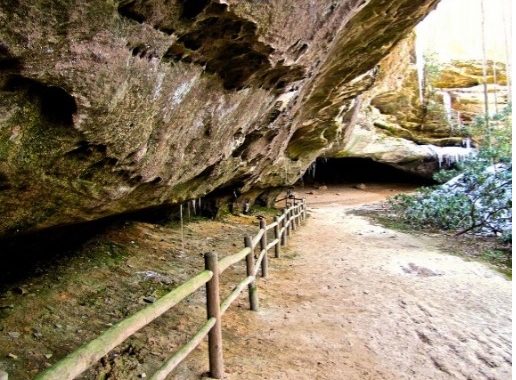
CMC Blog
Cincinnati Museum Center and the Cincinnati Zoo Team Up to Evaluate Population Recovery of Cumberland Sandwort
By: Rachel Bridgens, Manager, Zoology DNA Lab and Collections
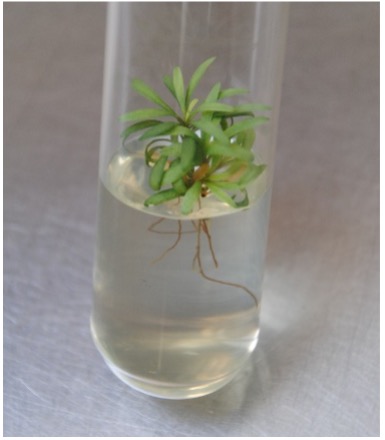
A test tube individual of M. cumberlandensis from the ex situ collection at CREW. Photo credit: Cincinnati Zoo
An outplanting is a commonly used conservation technique used by land managers and conservation biologists to supplement natural populations of threatened or endangered plant species with new populations. These new populations often come from ex situ collections which are plant individuals stored outside of the natural population in greenhouses, test tubes (micropropagation) or in seed banks. In 2005, scientists from the Cincinnati Zoo & Botanical Garden’s Center for Conservation and Research of Endangered Wildlife (CREW) used their ex situ test tube plant collection to produce a supplemental outplanting of the rare Cumberland Sandwort (Minuartia cumberlandensis). Cincinnati Museum Center has partnered with CREW to use genetics to measure the viability of the outplanting.
The Cumberland Sandwort is an herbaceous perennial known to occur exclusively in the Cumberland Plateau of southern Kentucky and northern Tennessee. This species produces flowers in late June through early August, however, it may also reproduce clonally.
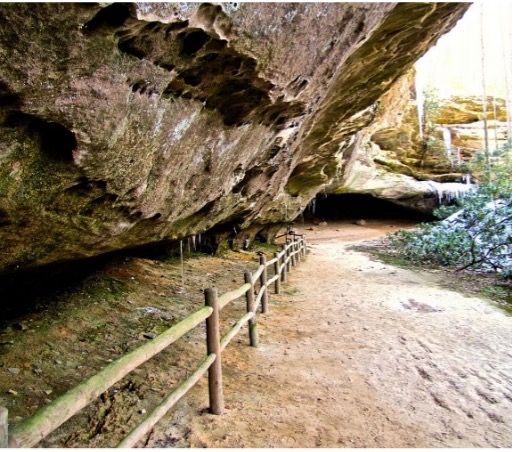
Rockhouses in Daniel Boone National Forest. Photo credit: Brian Stansberry
Rockhouses, abundantly found in the Cumberland Plateau, provide shady, damp soil that is ideal for the growth of Cumberland Sandwort. However, these rockhouses are popular places for the excavation of Native American artifacts and rappelling which subject these plants to trampling. As a result, Cumberland sandwort was listed as a federally endangered species in 1988. This species was de-listed in 2021 due, in part, to the presence of CREW’s thriving experimental outplanting. This outplanting was made up of individuals originally collected from the dwindling wild populations in Tennessee, however, there are concerns that it may lack genetic diversity, an important determinant of population health.
In 1999, CREW collected seeds from Tennessee’s wild population. These seeds were germinated and later initiated in tissue culture. Only seven of the germinated seeds survived tissue culture initiation and were stored in test tubes as a part of CREW’s ex situ plant collection.
In 2005, a total of 63 clones from the original seven test tube plants were used to initiate an experimental outplanting at Daniel Boone National Forest (DBNF) in Kentucky which maintains a similar habitat as the wild populations of Cumberland sandwort.

Wild individual of M. cumberlandensis. Photo credit: Megan Philpott
To determine if an experimental outplanting is successful, there are a few key things to look for:
- The population has persisted for at least 10 years. As of 2015, the population has grown to 200+ individuals including mature, naturally reproducing adults.
- The outplanting should contain at least 50 genetically distinct individuals. In this case, the outplanting was established with only seven genetically distinct individuals but has flourished regardless. The genetic diversity of the growing DBNF population must be measured to understand the viability of this claim.
- The new population mimics the genetic diversity of the founding population, that is, the wild population originally collected in Tennessee. To determine if these populations are similarly genetically variable, diversity measures must be compared.
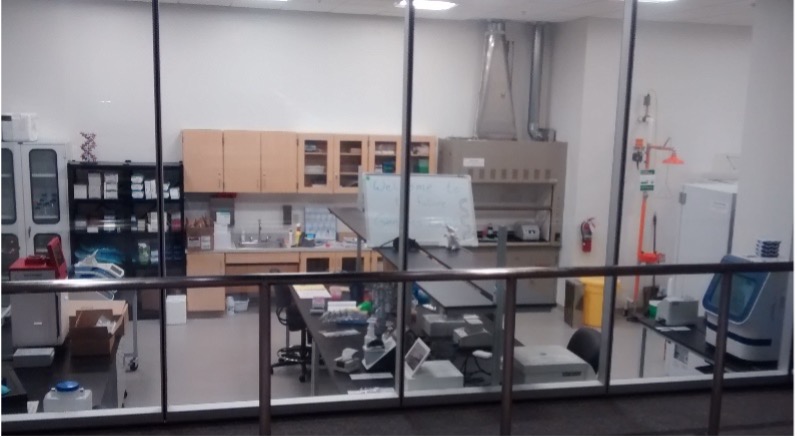
Cincinnati Museum Center’s DNA Lab. Photo Credit: Heather Farrington
Cincinnati Museum Center’s DNA Lab is collaborating with CREW’s plant lab division to investigate points 2 and 3 and determine the viability of the outplanting. The DNA Lab staff will genetically analyze tissue samples collected in 2013 from DBNF and the Tennessee wild population of Cumberland sandwort and compare their genetic diversity. These diversity measures will shed light on the importance of genetic variability as an indicator of population health and will drive further conservation efforts of this species and many other plants.
While we have made great strides in the conservation and restoration of Cumberland Sandwort, most excitingly, its de-listing in 2021, there is still a lot of work to be done to maintain a self-sustaining population. The results of this project will help to inform those efforts moving forward.
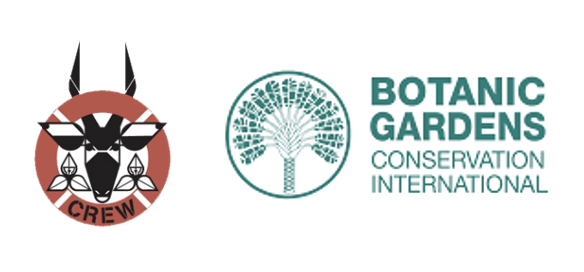
This project will be completed in partnership with the Center for Conservation and Research of Endangered Wildlife (CREW) with funding provided by Botanic Gardens Conservation International.
Museum Admission
Includes Cincinnati History Museum, Museum of Natural History & Science and The Children’s Museum.
| Adult (13+): | |
| Senior (60+): | |
| Child (3-12): | |
| Member Adult: | FREE |
| Member Child: | FREE |
Members receive discounts!
Become a Member today to save on programs, exhibits and films throughout CMC.
Museum Hours
Open Thursday – Monday
10 a.m. to 5 p.m.
Closed Tuesday and Wednesday
Closed Thanksgiving Day and Christmas Day
Member’s-only early entry: Saturdays at 9 a.m.
Customer Service Hours:
Monday – Sunday, 9 a.m. to 5 p.m.
